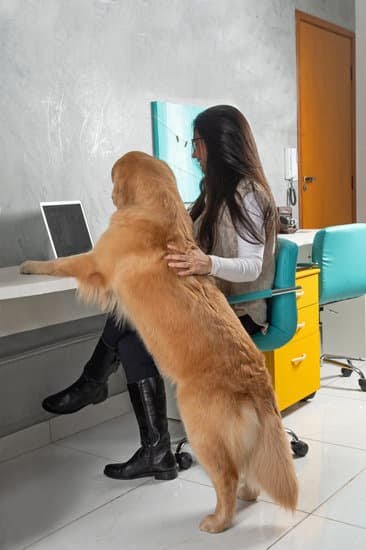How To Train Your Dog With Shock Collar
If you have a disobedient dog, you may be considering using a shock collar to train them. Shock collars are a type of electronic collar that deliver a shock to your dog’s neck when they misbehave. While they may be an effective training tool, they are also controversial. Before you decide to use a shock collar to train your dog, it is important to understand how they work and the potential risks associated with them.
How Shock Collars Work
Shock collars work by delivering a shock to your dog’s neck when they misbehave. The shock is usually delivered through two electrodes that are placed on the dog’s neck. The shock is adjustable, so you can choose the level of shock that is appropriate for your dog.
The idea behind using a shock collar is that it will deter your dog from misbehaving. The shock is not meant to hurt your dog, but rather to startle them and teach them that the behavior is unacceptable.
The Risks of Shock Collars
While shock collars may be an effective training tool, they also come with some risks. One of the biggest risks is that the shock collar can be used incorrectly. If the shock is too strong or if it is used for too long, it can cause pain and suffering to your dog.
Another risk associated with shock collars is that they can be used to punish your dog. If you are using the shock collar to punish your dog for misbehaving, it can cause them to be fearful and anxious. This can lead to further behavioral problems and may even cause your dog to become aggressive.
Before you decide to use a shock collar to train your dog, it is important to understand the risks associated with them. If you are unsure whether or not a shock collar is the right tool for your dog, consult with a professional trainer.
Best Training Shock Collar For Large Dogs
– Petsafe
When it comes to choosing the best training shock collar for large dogs, there are a few factors to consider. The first is that not all shock collars are created equal – some are designed for smaller dogs, while others are made for larger breeds. The second is that not all large dogs are the same – some are more active and energetic than others. And the third factor is that each dog is unique, and will respond differently to different types of training collars.
With that in mind, here are three of the best training shock collars for large dogs.
1. The Petsafe Big Dog Trainer is perfect for large and active dogs. It has a range of up to 400 yards, and features 16 levels of correction. It’s also water-resistant, and includes a tone-only mode for training.
2. The Garmin Delta XC is also perfect for large and active dogs. It has a range of up to 1,000 yards, and features 18 levels of correction. It also has a bark-detection mode, which automatically increases the correction level when your dog barks.
3. The Dogtra 1900NCP is perfect for stubborn or difficult dogs. It has a range of up to 1 mile, and features 127 levels of correction. It’s also water-resistant, and includes a tone-only mode for training.
Patpet 320 Dog Training Collar
is the perfect solution for training your dog. This collar offers a safe and humane way to train your dog with static correction. The collar uses a vibration sensor to activate the static correction when your dog barks. This is a great way to train your dog to stop barking. The collar also has a beep mode that can be used to reinforce commands. The Patpet 320 Dog Training Collar is made of high quality materials and is designed to last.
Dog Care Training Collar Remote Instructions
If you’re like most dog owners, you want to make sure that your pet is well-behaved and obedient. One way to do this is to use a dog training collar. This device is worn around the dog’s neck and can be used to give your pet a shock or vibration when he or she does something you don’t want them to do.
While some people are hesitant to use a dog training collar because of the possible pain it can cause, it’s important to remember that these collars should only be used as a last resort after other methods, such as positive reinforcement, have failed.
If you decide to use a dog training collar, it’s important to know how to use it properly. Here are some tips:
1. Make sure the collar is properly fitted. It should be snug, but not tight, and it should not be so loose that the dog can slip out of it.
2. Choose the appropriate mode for your dog. There are three modes: vibration, tone, and shock. Vibration is the mildest mode and is good for training puppies or for dogs that are afraid of shocks. Tone is also mild, but it doesn’t provide any punishment. Shock is the most severe mode and should only be used as a last resort.
3. Start with the lowest level of stimulation and increase it if necessary. You should only increase the level if the dog doesn’t respond to the lower level.
4. Be consistent with your training. If you don’t want your dog to jump on people, for example, you need to be consistent in telling him or her not to do it and use the collar as a punishment when he or she does.
5. Don’t leave the collar on the dog for extended periods of time. It’s not healthy for the dog to wear the collar all the time, so only put it on when you’re training him or her.
6. Be careful when using the shock mode. Don’t use it for too long or at too high a level, or you could cause injury to your dog.
Using a dog training collar can be a helpful way to train your pet, but it’s important to use it correctly. Follow these tips and you’ll be on your way to a well-behaved dog.
Dummy Dog Training Collar
The dummy dog training collar is a great tool for training your dog. It is a collar that has a fake animal head attached to it. This allows you to simulate the behavior of another animal, such as a rabbit or a deer, and teaches your dog how to properly react to different animals. The dummy dog training collar is also a great way to train your dog in basic obedience commands.

Welcome to the blog! I am a professional dog trainer and have been working with dogs for many years. In this blog, I will be discussing various topics related to dog training, including tips, tricks, and advice. I hope you find this information helpful and informative. Thanks for reading!





